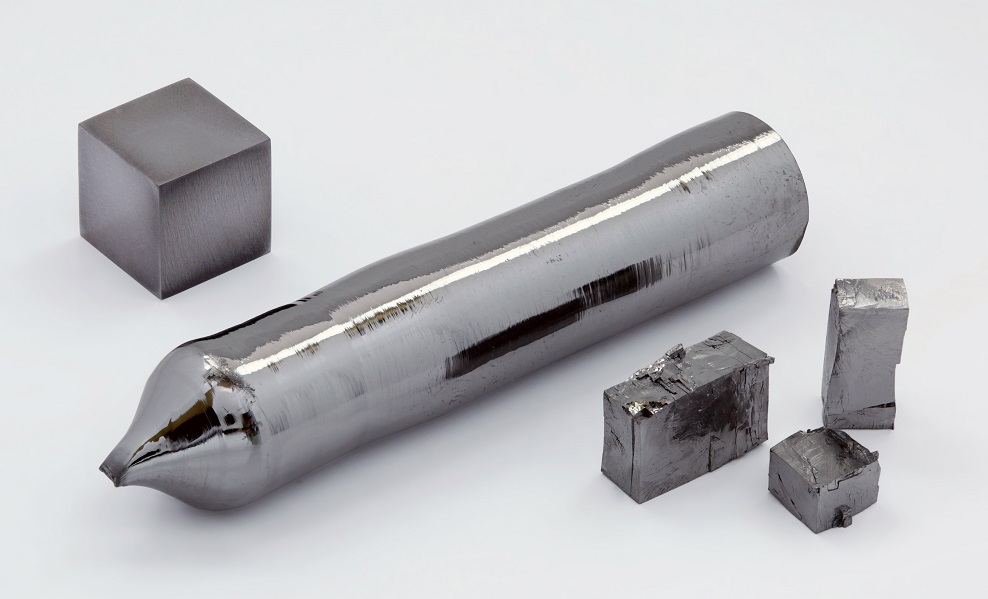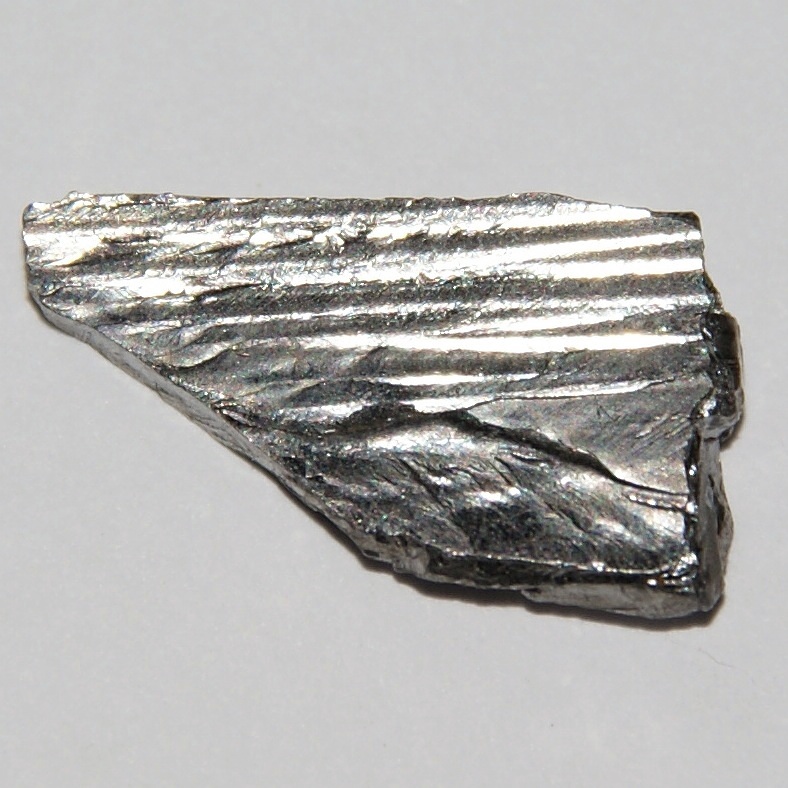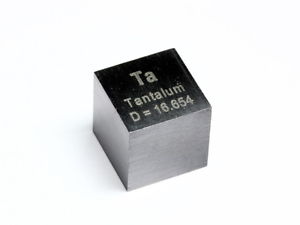Why Tantalum Is Important?

Why Tantalum Is Important?
Tantalum occurs in columbium ores. As the demand for columbium increases, increasing amounts of tantalum concentrates become available. After a difficult and complex separation and reduction process, both metals are obtained in the form of powder. The powder is pressed in dies to form bars which are vacuum sintered by passing high currents through them in much the same way that tungsten powder is consolidated. Ingots may then be cast in consumable-electrode vacuum-arc furnaces or electron-beam furnaces. The ingots are worked cold because of the reaction of tantalum with air at high temperatures. Heavy cold working is possible because of the high room-temperature ductility of tantalum. Intermediate annealing must be done in vacuum furnaces.

Why Tantalum is Important?
Pure tantalum oxidizes in the air at high temperatures even more rapidly than tungsten. Hence, test specimens or structural members of tantalum must be contained in high-vacuum systems if they are to be used at elevated temperatures. Tantalum foil, for example, may be used as a heating element up to temperatures higher than can be obtained with molybdenum foil; however, the vacuum should be about 1 x 10-4 mm Hg or better.
Tantalum has other characteristics that make it attractive for applications that are not related to its high melting point. Pure tantalum and some of its alloys have better ductility and toughness than the other refractory metals and can be rolled and fabricated easily at room temperature. Pure tantalum is one of the metals that retain a high degree of ductility down to -423 F.
Furthermore, it does not work to harden as rapidly as many other metals, so high reductions by rolling or swaging are possible between anneals.
Tantalum has exceptional resistance to most corrosive media below 300 F. For this reason, tantalum is used in many applications involving exposure to corrosive environments in the chemical industry.
Tantalum is resistant to oxidation by air to about 500 F. It has been used as a container for molten sodium, potassium, and other metals and alloys at temperatures as high as 2200 F (in the absence of air) without being attacked.

Tantalum high precision density
A surface oxide film with important dielectric properties can be produced on tantalum. This fact has made the metal attractive for electrolytic capacitors. As a consequence, more tantalum has been used for capacitors than for any other purpose. The oxide film on tantalum also permits its use as a rectifier in electrical circuits. Because tantalum is easily formed and welded and has a low vapor pressure, it is also used extensively in electronic tubes.
Objectives of the tantalum-alloy development programs have been to improve the elevated-temperature strength properties and to reduce the rate of oxidation at elevated temperatures. Some progress has been made in meeting these objectives, but alloy development is still in the early stages. Alloys of interest are those with tungsten, molybdenum, columbium, vanadium, hafnium, chromium, zirconium, titanium, and aluminum.
Tantalum has been used successfully as an alloying element in high-temperature alloys based on other metals.
Conclusion
Thank you for reading our article and we hope it can be helpful to you. If you want to know more about tantalum and other refractory metals, you can visit Advanced Refractory Metals for more information. We offer our customers super high-quality tantalum products and other refractory metals at a very competitive price.
{{item.content}}
LEVE A REPLY
{{item.children[0].content}}
{{item.content}}






